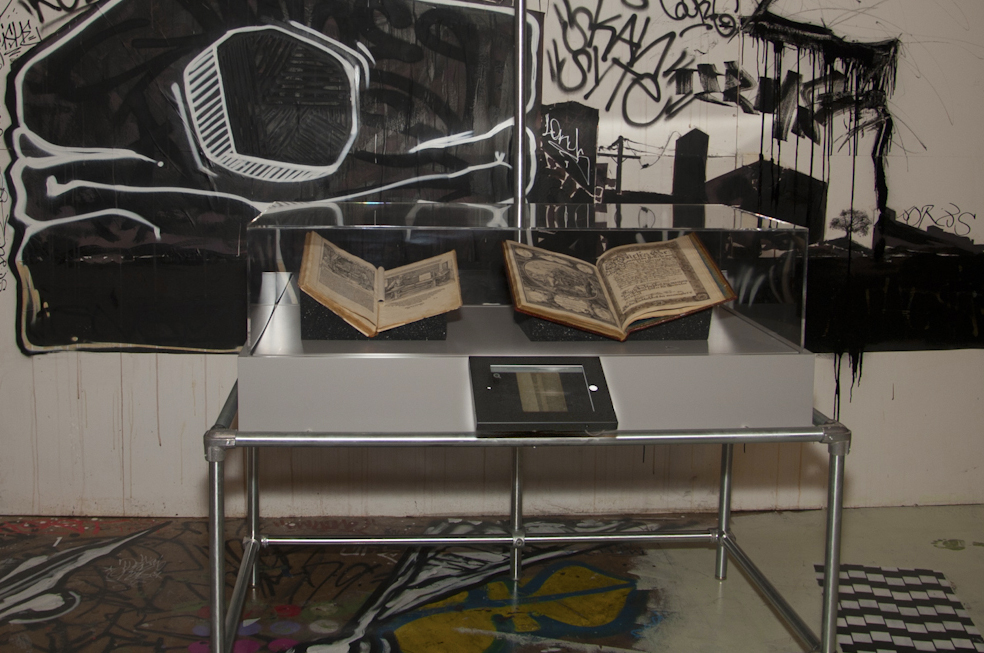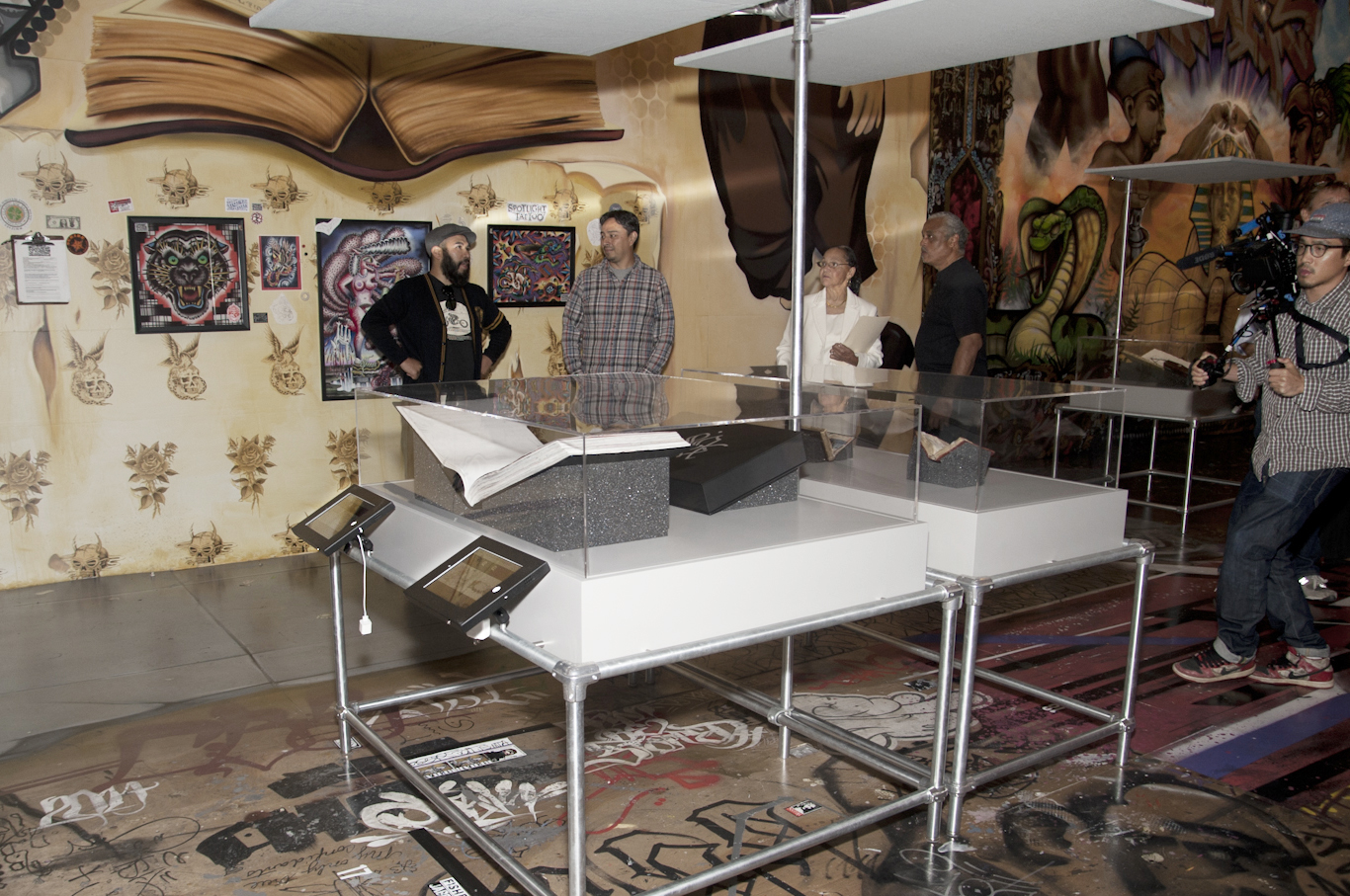ESMOA Interactive Book Project
Last summer when I built the ESMoA.org for ESMOA, the El Segundo Museum of Art, I knew I was getting to work with a dynamic, engaged team, and I have been extremely happy to be able to continue to work with them since that first project. One of my favorite phrases as a freelancer has become "we were wondering..." and the team at ESMOA says that a lot. Meetings with them tend to turn into the grown up versions of those late night college study sessions that made you feel like the world was your oyster. How many times can you say you've come out of a planning meeting feeling smarter then when you went in?
So when they they called us in March and said they were wondering if we could build a way for their patrons to dynamically interact with digital versions of Renaissance books so delicate they can not be touched, we got excited. I've never built an interactive book before, but as the conference call wore on, our brains were positively buzzing with possibilities. Would we use an epub format? How would we preserve the visual clarity of the illuminated manuscripts we'd be using? Do we want a local copy? Live on the web? What kind of bandwidth would that cost? Would it look good on new iPads and old ones at the same time? What about phones? What about zooming? Swiping while zoomed?
[caption id="attachment_1021" align="aligncenter" width="984"] Photo credit: Gloria Plascencia, gloriaplascencia.com[/caption]
Photo credit: Gloria Plascencia, gloriaplascencia.com[/caption]
After that first call, we got cracking on research, and found Pageflip5, a dynamic application that we could modify easily with our own Javascript and PHP in order to display exactly what and how we wanted. The Pageflip5 team was incredibly responsive, and their per project cost is really reasonable.
After that, it was just a matter of getting the scanned TIFF and JPEG files from the Getty Research Center, which is in the process of scanning all their archival books using state-of-the art scanners made specifically for old books so as not to damage them. There were several thousand large files, so transferring them online would have actually taken longer than sending a hard drive via UPS, which arrived on our door step the next day.
Then we had to make the book easy to access by museum patrons and website visitors, who would have a wide range of connection strengths. Thanks to our proprietary process in combination with the Pageflip5 framework, each book took less time to compile and upload to the site than it would have to create a static gallery of the pages, as some other sites have done with books like this in the past. Once online, the books take less time to load than an image gallery of the same size, and are easy to navigate, zoom, and reference.
Every page and pageset has its own unique URL, so that outside articles can link to, say, page 50 of a particular volume without calling the entire book. Every page is completely zoom-able for a level of detail that no layman would ever be allowed to get with the original work.
From start to finish, the project took several months to conceptualize, research, and implement, but less than 40 billable-hours from initial meeting to delivery.
[caption id="attachment_1024" align="aligncenter" width="1366"] Photo credit: Gloria Plascencia, gloriaplascencia.com[/caption]
Photo credit: Gloria Plascencia, gloriaplascencia.com[/caption]
For ESMoA, the interactive book project was just a part of a much larger exhibit. Climate controlled cases held the books we digitized, each case had an iPad with our book project onboard, while the walls and floors all around the cases were filled with images from local graffiti artists. KCET called the experience "stunning," and the L.A. Times said the exhibit was "instructive" in that the free-form display gave the art a framework that too many museums fail to supply when they exhibit street art.
You can read more about Scratch, and watch a video on the making of Scratch on ESMoA.org, or by clicking this link.